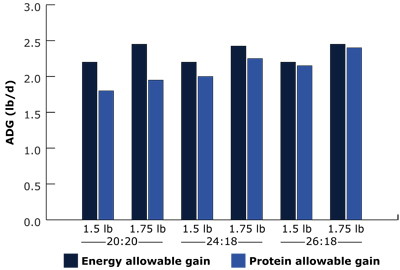
Protein Matters: Meeting Calf Performance Goals – Dr. Noah Litherland, Vita Plus
 By Dr. Noah Litherland, Vita Plus dairy youngstock technical specialist
By Dr. Noah Litherland, Vita Plus dairy youngstock technical specialistProtein is the single most important and expensive ingredient in milk replacers contributing to calf growth. That doesn’t mean this macronutrient is easy to understand. Exploring the sources and functions of protein can help you better select which milk replacer is right for your calf program.
Sources of protein in milk replacer
Calf milk replacers are typically marketed by the ratio of protein to fat. For example, a 26:18 milk replacer contains 26 percent protein and 18 percent fat (the remainder of the formula is made up with 46 percent lactose and 10 percent ash or minerals). The protein content of the replacer is always denoted by the first number in the ratio indicated on the tag.
Traditional sources of protein include dried whey, whey protein concentrate, delactosed whey and skim milk.
Whey is a co-product of cheese manufacturing. The co-product is often further processed to remove some of the lactose, fat and minerals. It ranges from 34 to 80 percent protein. The primary whey proteins include beta-lactaoglobulin and alpha-lactalbumin and each of these proteins varies in amino acid composition, digestibility, and value to the calf.
Alternative protein sources, such as wheat protein isolate, soy protein and animal plasma protein, are typically used to reduce cost. Ingredients are not necessarily listed on the tag in order of greatest to least amounts in the formula. Alternative ingredients typically do not replace more than 5 to 10 percent of the total milk replacer. Some research has indicated calf growth and health benefits when plasma replaced some of the milk protein in the formula.
The amount of protein sources used will vary according to the protein content of the ingredients and cost of alternative ingredients. Dried skim milk, buttermilk, casein and other milk-based ingredients typically do not contribute significantly to formulas due to competition for human use and therefore price.
Function of protein in milk replacer
Proteins supply amino acids (AA), which are used for muscle development and bone growth, and can be broken down to provide energy in times of energy deficit. Proteins are composed of 20 AAs, many of which the calf can synthesize in adequate amounts to meet its needs.
But several AAs must be consumed in the diet for maintenance and growth. In addition, certain AAs may impact immune function, hormone concentrations and performance as an adult.
AA imbalances result in reduced calf performance. Milk replacers should be balanced for calves’ AA profile and therefore might include pure AAs such as lysine and methionine. Whey proteins are highly digestible in the small intestine and possess excellent amino acid balance.
Feeding rate
As described in Table 1, protein maintenance needs (used to replace proteins in body tissues) are relatively small (less than 0.1 pounds per day). Amino acids for growth represent the major portion of total protein requirements (0.3 pounds per pound of bodyweight gain). As bodyweight and rate-of-gain increase, the crude protein needed to achieve this growth also increases.
Table 1. Prediction of protein requirements based on calf size and averaged daily gain (NRC 2001).

Research has demonstrated higher protein feeding amounts (both concentration and feeding rate) result in greater lean body growth and less deposition in body fat. Matching energy and protein intake are impacted by the feeding rate, calf bodyweight, and impact of the environment. The impact of the protein-to-fat ratio and feeding rate are described in Figure 2. The key is to select a milk replacer and a feeding rate that most closely matches the desired calf performance.
Figure 2. Estimates of energy and protein allowable gain for calves fed milk replacer varying in protein to fat content as well as feeding rate of 1.5 or 1.75 pounds of powder per calf per day.

| Category: |
Calf and heifer nutrition Starting Strong - Calf Care |

